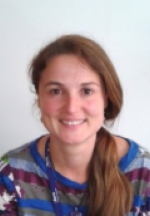ALS, Alzheimer's - Dementia, Author Interviews, JAMA, Multiple Sclerosis, Neurological Disorders, Stem Cells / 12.01.2016
Stem Cell Derived Growth Factors May Slow Progression of ALS
MedicalResearch.com Interview with:
Prof. Dimitrios Karussis M.D., Ph.D.
Professor of Neurology
Head, Multiple Sclerosis Center
Hadassah BrainLabs
Medical Research: What is the background for this study? What are the main findings?
Prof. Karussis: BrainStorm Cell Therapeutics is developing innovative, autologous stem cell therapies for highly debilitating neurodegenerative diseases such as Amyotrophic Lateral Sclerosis (ALS), Multiple Sclerosis (MS), and Parkinson’s Disease (PD). Our technology, NurOwn™ is a first-of-its-kind approach that induces autologous bone marrow-derived Mesenchymal Stem Cells (MSCs) to secrete Neurotrophic Growth Factors (NTFs). These MSC-NTF cells have been shown to be protective in several animal models of neurodegenerative diseases.
Data from the clinical trials described in the recent issue of the Journal of American Medicine – Neurology (JAMA Neurology), suggest that NurOwn can help patients with ALS. The two trials featured in the article, a phase 1/2 and a phase 2a, studied the transplantation NurOwn cells in ALS patients. These trials confirmed the excellent safety profile of NurOwn and suggest a clinically meaningful effect. The investigators used two well established clinical endpoints that measure disease activity in ALS, the Revised ALS Functional Rating Scale and Forced Vital Capacity, and were able demonstrate a slowing of disease activity in the period following treatment.
(more…)















